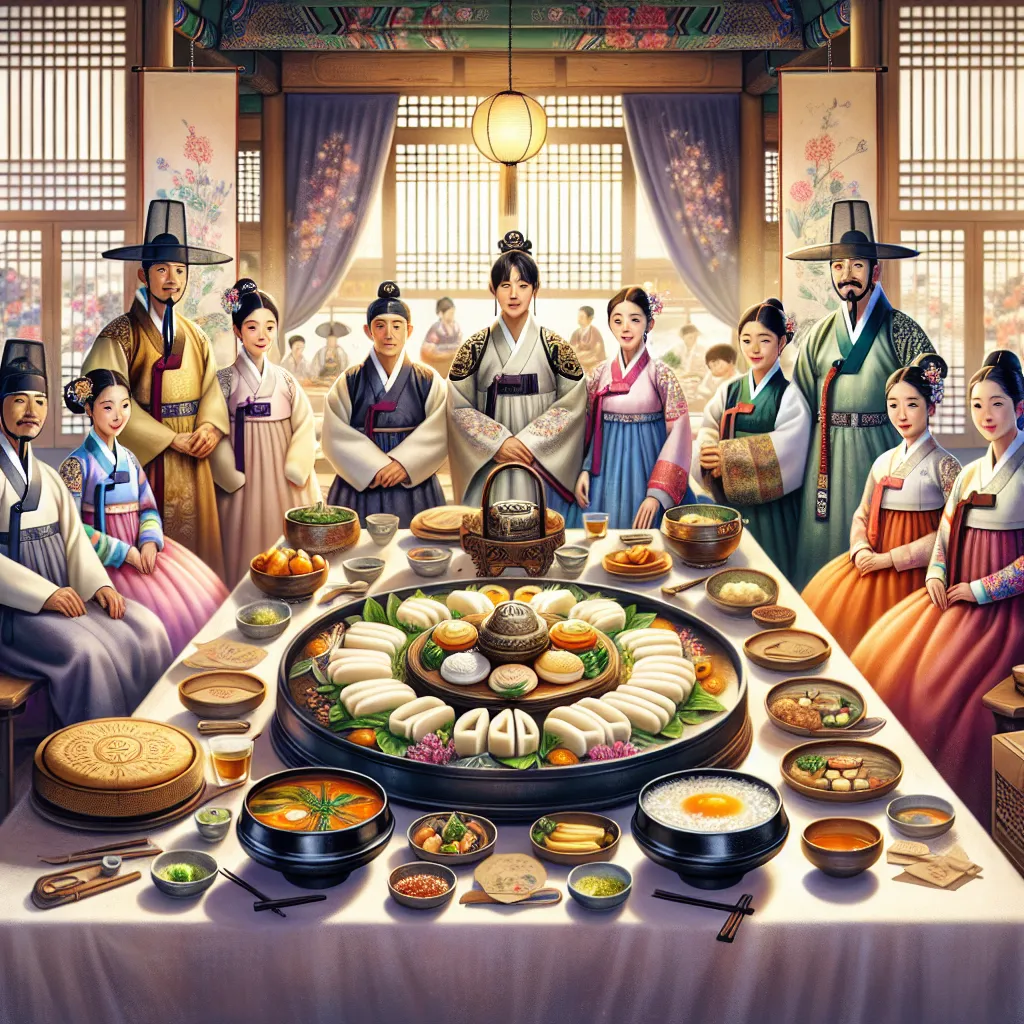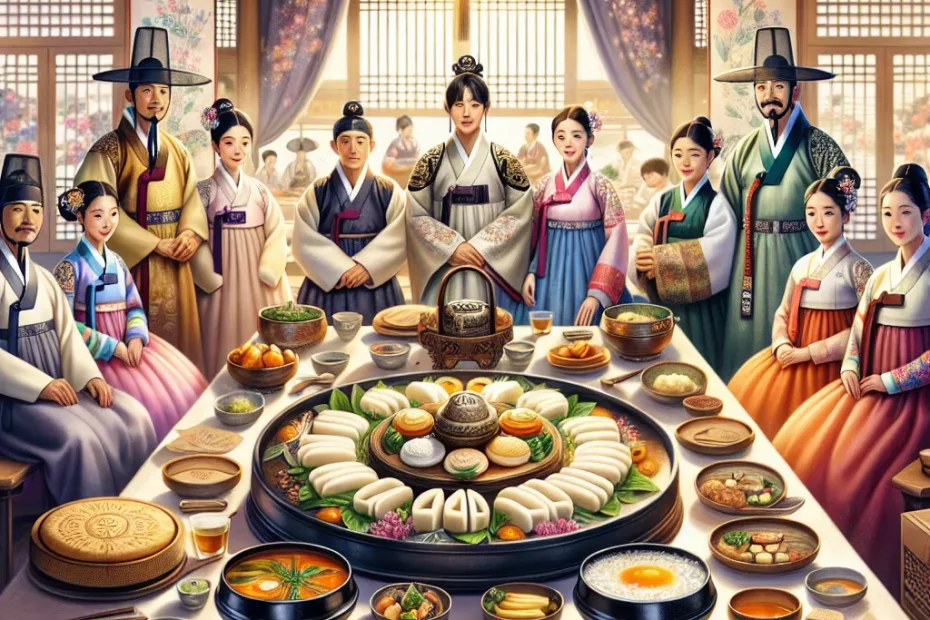As the Lunar New Year approaches, Koreans around the world prepare to celebrate Seollal, a traditional holiday filled with customs, rituals, and delicious foods. The origins of Seollal date back centuries, reflecting the deep cultural heritage of Korea. From ancestral rites to festive gatherings, Seollal is a time to honor traditions and strengthen family bonds. Throughout the holiday, various customs and rituals are observed, each carrying symbolic meaning and significance. While modern celebrations may have evolved, the essence of Seollal remains rooted in respect for the past and hope for the future. Join us on a journey through the rich tapestry of Seollal traditions and discover the beauty of Korea’s Lunar New Year celebration.

Origin of Seollal Celebration
In the rich tapestry of Korean cultural heritage, Seollal stands out as a vibrant thread, woven with traditions and customs that date back centuries. The celebration of Seollal, Korea’s Lunar New Year, holds a special place in the hearts of the Korean people, symbolizing new beginnings, family unity, and ancestral reverence.
Origins of Seollal
Seollal, which falls on the first day of the lunar calendar, marks the beginning of a new year filled with hope and prosperity. The origins of Seollal can be traced back to ancient agricultural rituals practiced by the early agrarian societies of Korea. These rituals were performed to ensure a bountiful harvest and to express gratitude to the gods for their blessings.
Central Rituals of Seollal
One of the central rituals of Seollal is the ancestral memorial service, known as “charye.” During this solemn ceremony, families gather to pay their respects to their ancestors, offering food and wine as a sign of gratitude and reverence. The charye ceremony is a deeply symbolic gesture, emphasizing the importance of family ties and the continuity of generations.
Another key tradition of Seollal is the “sebae” ritual, where younger family members bow to their elders as a sign of respect and good fortune for the coming year. This ritual reflects the Confucian values of filial piety and respect for one’s elders, which are deeply ingrained in Korean society.
Seollal Festivities
In addition to these traditional rituals, Seollal is also a time for festive gatherings, delicious food, and colorful cultural performances. One of the most popular customs during Seollal is the playing of traditional games such as “yutnori” and “jaegi chagi,” which bring joy and laughter to families and communities.
As Korea’s most important traditional holiday, Seollal embodies the spirit of unity, gratitude, and renewal. It is a time to reflect on the past, celebrate the present, and look forward to the future with hope and optimism. Through its rich tapestry of customs and rituals, Seollal continues to be a cherished celebration that brings families and communities together in joyous harmony. 🎉🌙
In conclusion, the origin of Seollal celebration is deeply rooted in Korea’s cultural heritage, reflecting the values of respect, gratitude, and family unity. As we usher in the Lunar New Year, let us embrace the traditions of Seollal with open hearts and joyful spirits, honoring the past and embracing the future with hope and positivity. Happy Seollal! 🎆🎊
Traditional Seollal Foods
During Seollal, Korea’s Lunar New Year celebration, traditional foods play a significant role in bringing families together and honoring cultural heritage. These dishes are not only delicious but also symbolize good luck, prosperity, and health for the coming year. Let’s explore some of the must-have traditional Seollal foods that grace the tables of many Korean households during this festive time! 🎉🍲
Tteokguk (Rice Cake Soup)
Tteokguk, a savory soup made with sliced rice cakes, is a staple dish during Seollal. The round shape of the rice cakes symbolizes longevity and good fortune, making it a popular choice for the New Year. Families gather around the table to enjoy this hearty soup, with each spoonful representing a year added to one’s age. 🥣🍚
Jeon (Korean Pancakes)
Jeon, a variety of Korean pancakes, is another favorite Seollal dish enjoyed by many. These crispy delights come in different flavors such as kimchi, seafood, and vegetable, and are often served as a side dish during the New Year festivities. Jeon symbolizes prosperity and wealth, making it a must-have for a bountiful year ahead. 🥞🍤
Yakgwa (Honey Cookies)
Yakgwa, traditional Korean honey cookies, are a sweet treat enjoyed during Seollal. Made with deep-fried wheat flour and honey, these chewy cookies symbolize a sweet and harmonious year to come. Families often exchange Yakgwa as gifts to wish each other happiness and good fortune in the New Year. 🍯🍪
Japchae (Stir-Fried Glass Noodles)
Japchae, a colorful dish made with stir-fried glass noodles, vegetables, and meat, is a popular choice for Seollal gatherings. The vibrant hues of the ingredients symbolize a bright and prosperous future, making it a meaningful addition to the New Year’s table. Japchae’s delicious flavors and auspicious meanings make it a beloved dish during this festive time. 🍜🥢
Songpyeon (Rice Cakes)
No Seollal celebration is complete without Songpyeon, traditional half-moon-shaped rice cakes filled with sweet ingredients like honey, sesame seeds, and red beans. These delicacies are steamed on a bed of pine needles, infusing them with a fragrant aroma. Songpyeon represents family unity and is shared among loved ones to foster strong bonds and happiness in the New Year. 🌙🍡
In conclusion, these traditional Seollal foods not only delight the taste buds but also carry deep cultural significance, bringing luck, happiness, and togetherness to families celebrating the Lunar New Year. Embrace these culinary delights and usher in a year filled with prosperity and joy! 🎊🥮
Customs and Rituals During Seollal
Ancestor Memorial Service (Charye)
One of the most important rituals during Seollal is the Charye, where families pay respects to their ancestors by offering food and drinks on an altar. This solemn ceremony is a way to express gratitude and seek blessings from the deceased elders. The table is meticulously set with specific dishes like rice cake soup (tteokguk), fruits, and various other delicacies. Ancestor worship plays a significant role in Korean culture, emphasizing the importance of family ties and traditions.
Traditional Foods and Treats
Seollal is incomplete without indulging in a variety of traditional foods that hold symbolic meanings. Tteokguk, a hearty soup made with sliced rice cakes, symbolizes longevity and prosperity. Another popular dish is jeon, a type of Korean pancake made with vegetables, meat, or seafood. These dishes are not only delicious but also carry deep cultural significance, reflecting hopes for a bountiful and auspicious year ahead.
Sebae: New Year’s Bow
During Seollal, the younger generation performs a deep bow, known as sebae, to their elders as a sign of respect and well-wishes. In return, the elders give blessings and often offer gifts or money in special envelopes called “sebaetdon.” This beautiful tradition reinforces the values of filial piety and strengthens family bonds, fostering love and harmony among generations.
Games and Festivities
Seollal is a time for joyous celebrations, with various games and activities bringing families closer together. Yut Nori, a traditional board game played with sticks, is a popular choice during this festive period. Families also engage in activities like kite-flying, folk dancing, and storytelling to usher in good fortune and happiness for the new year. These lively traditions create lasting memories and add to the festive spirit of Seollal.
In conclusion, Seollal is a time-honored tradition that embodies the essence of Korean culture, emphasizing family, respect, and harmony. By partaking in these customs and rituals, Koreans not only celebrate the new year but also preserve their heritage and values for generations to come. May the spirit of Seollal bring you joy, prosperity, and blessings in abundance! 🌟
Modern Celebrations of Seollal
In modern times, Seollal, the Korean Lunar New Year, continues to hold a significant place in the hearts of the Korean people, blending traditional customs with contemporary celebrations. The festivities surrounding Seollal are not only a time to honor ancestors and engage in age-old rituals but also a period of joyous gatherings, delicious feasts, and vibrant cultural performances. 🎉
Charye: Honoring Ancestors
One of the key aspects of modern Seollal celebrations is the tradition of paying respects to ancestors through ancestral rites known as Charye. Families come together to offer food and perform rituals at ancestral gravesites, expressing gratitude and seeking blessings for the upcoming year. This practice highlights the deep-rooted respect for ancestors and the importance of family ties in Korean culture. 🙏
Sebae: Sign of Respect
Another prominent feature of Seollal festivities is the practice of Sebae, where younger family members bow to their elders as a sign of respect. This gesture symbolizes filial piety and reinforces the values of respect and hierarchy within the family unit. The exchange of well-wishes and blessings during Sebae fosters harmony and unity among family members, strengthening bonds across generations. 👴👵
Traditional Dishes and Tteokguk
Food plays a central role in modern Seollal celebrations, with traditional dishes like Tteokguk (rice cake soup) taking center stage. Tteokguk is believed to bring good luck and symbolizes the turning of a year older for everyone who partakes in it. Families gather around the dining table to enjoy a hearty meal together, sharing stories and laughter as they welcome the new year. 🍲
Cultural Performances and Festivals
In addition to traditional customs, modern Seollal celebrations also incorporate various cultural performances and activities. From folk dances and music performances to hanbok fashion shows and traditional games, Seollal festivals showcase the richness and diversity of Korean heritage. These vibrant displays of culture serve to educate and entertain both locals and visitors alike, fostering a sense of pride and appreciation for Korea’s cultural heritage. 💃🎶
Overall, the modern celebrations of Seollal reflect a harmonious blend of tradition and innovation, preserving the essence of Korean cultural heritage while embracing the spirit of contemporary festivities. As Koreans come together to celebrate the Lunar New Year, the timeless customs and vibrant celebrations of Seollal continue to thrive, uniting people in joy and gratitude for the blessings of the past and the promise of the future. 🌟
In conclusion, Seollal remains a cherished and vibrant tradition that embodies the values of family, respect, and cultural pride, making it a truly special time of year for the Korean people. Let us continue to honor and celebrate the beauty of Seollal, passing down its rich traditions to future generations with love and reverence. 🌸🎊
Seollal, the Korean Lunar New Year celebration, is a time-honored tradition filled with rich customs, delicious foods, and meaningful rituals. From the deep-rooted origins of the celebration to the modern-day festivities, Seollal holds a special place in Korean culture. As families gather to pay respects to ancestors, share traditional foods, and participate in age-old rituals, the spirit of unity and renewal is palpable. The vibrant colors, the sounds of laughter and joy, and the sense of community all come together to make Seollal a truly special time of the year. Whether it’s bowing to elders, playing traditional games, or enjoying a feast of tteokguk, the essence of Seollal is about honoring the past while embracing the future. In a fast-paced world, Seollal serves as a reminder of the importance of family, tradition, and cultural heritage. It is a time to reflect on the values that bind us together and to look forward with hope and optimism. Seollal is not just a holiday; it is a celebration of identity, unity, and the enduring spirit of the Korean people.
